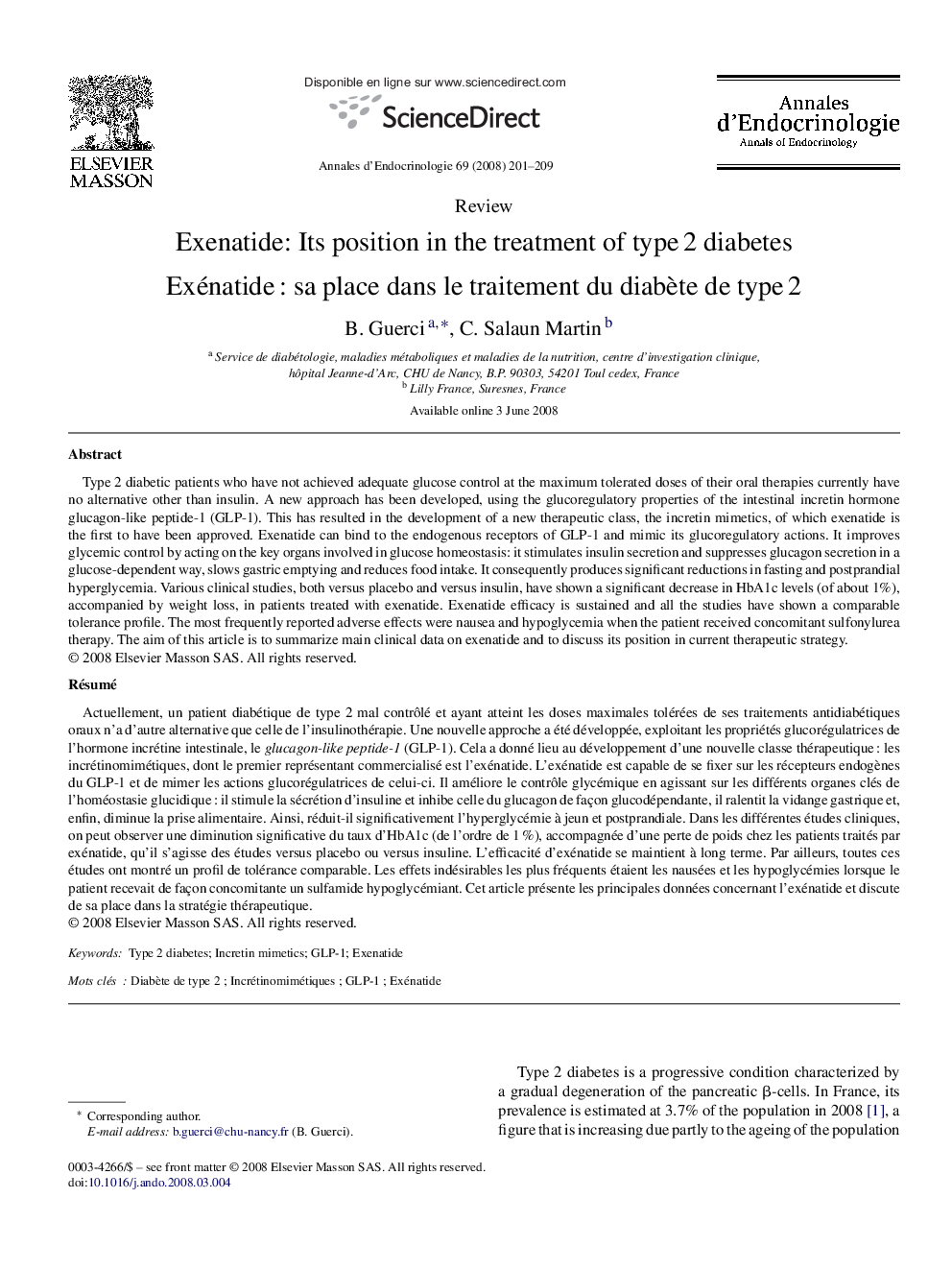| کد مقاله | کد نشریه | سال انتشار | مقاله انگلیسی | نسخه تمام متن |
|---|---|---|---|---|
| 3253211 | 1207105 | 2008 | 9 صفحه PDF | دانلود رایگان |

Type 2 diabetic patients who have not achieved adequate glucose control at the maximum tolerated doses of their oral therapies currently have no alternative other than insulin. A new approach has been developed, using the glucoregulatory properties of the intestinal incretin hormone glucagon-like peptide-1 (GLP-1). This has resulted in the development of a new therapeutic class, the incretin mimetics, of which exenatide is the first to have been approved. Exenatide can bind to the endogenous receptors of GLP-1 and mimic its glucoregulatory actions. It improves glycemic control by acting on the key organs involved in glucose homeostasis: it stimulates insulin secretion and suppresses glucagon secretion in a glucose-dependent way, slows gastric emptying and reduces food intake. It consequently produces significant reductions in fasting and postprandial hyperglycemia. Various clinical studies, both versus placebo and versus insulin, have shown a significant decrease in HbA1c levels (of about 1%), accompanied by weight loss, in patients treated with exenatide. Exenatide efficacy is sustained and all the studies have shown a comparable tolerance profile. The most frequently reported adverse effects were nausea and hypoglycemia when the patient received concomitant sulfonylurea therapy. The aim of this article is to summarize main clinical data on exenatide and to discuss its position in current therapeutic strategy.
RésuméActuellement, un patient diabétique de type 2 mal contrôlé et ayant atteint les doses maximales tolérées de ses traitements antidiabétiques oraux n’a d’autre alternative que celle de l’insulinothérapie. Une nouvelle approche a été développée, exploitant les propriétés glucorégulatrices de l’hormone incrétine intestinale, le glucagon-like peptide-1 (GLP-1). Cela a donné lieu au développement d’une nouvelle classe thérapeutique : les incrétinomimétiques, dont le premier représentant commercialisé est l’exénatide. L’exénatide est capable de se fixer sur les récepteurs endogènes du GLP-1 et de mimer les actions glucorégulatrices de celui-ci. Il améliore le contrôle glycémique en agissant sur les différents organes clés de l’homéostasie glucidique : il stimule la sécrétion d’insuline et inhibe celle du glucagon de façon glucodépendante, il ralentit la vidange gastrique et, enfin, diminue la prise alimentaire. Ainsi, réduit-il significativement l’hyperglycémie à jeun et postprandiale. Dans les différentes études cliniques, on peut observer une diminution significative du taux d’HbA1c (de l’ordre de 1 %), accompagnée d’une perte de poids chez les patients traités par exénatide, qu’il s’agisse des études versus placebo ou versus insuline. L’efficacité d’exénatide se maintient à long terme. Par ailleurs, toutes ces études ont montré un profil de tolérance comparable. Les effets indésirables les plus fréquents étaient les nausées et les hypoglycémies lorsque le patient recevait de façon concomitante un sulfamide hypoglycémiant. Cet article présente les principales données concernant l’exénatide et discute de sa place dans la stratégie thérapeutique.
Journal: Annales d'Endocrinologie - Volume 69, Issue 3, June 2008, Pages 201–209